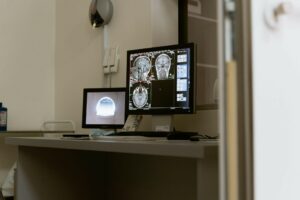Over the last couple of years, the prevalence of chronic conditions has been rising, leading to the demand for quality care. Subsequently, healthcare systems are facing the challenge of continuing to provide high-quality medical care. Amidst all that, industry stakeholders have realized that the best way to cope with this challenge is through value-based care, with radiology playing a central role.
How Important Is Radiology
Radiology is right in the middle of disease management. Under it, there are a variety of tools and techniques that healthcare givers can use to detect conditions. For instance, a CT scan abdomen can be used to detect a variety of medical conditions, including cancer, kidney infection, and alcoholic liver disease. Improving radiology through new technologies allows for efficient data workflows that benefit medical staff and patients by allowing faster and more accurate diagnoses.
The growing number of patients suffering from chronic conditions and rapid aging has increased the need for healthcare, leading to higher healthcare costs. Unfortunately, the number of skilled and experienced medical professionals isn’t meeting the growing demand for medical care. It causes a serious shortage of healthcare givers. And if the situation doesn’t improve, it will become harder to provide quality medical care to the general public.
To address this challenge, the approach in healthcare is changing from volume-based care to value-based care. In the former, healthcare givers are compensated based on the number of patients they treat. The latter aims to improve patient outcomes. Value-based care attaches payments and incentives to results instead of the workload. Doing so encourages elements such as quality care. The medical team focuses on patients’ experiences and involves them in decision-making to facilitate a good outcome.
The Role of Radiology
Radiology plays a big role in achieving value-based healthcare. And why is that? It greatly impacts the whole treatment plan, from diagnosis to follow-up care. When a patient goes for treatment, doctors will put almost everything on hold until they receive feedback from radiology. Furthermore, early diagnosis of conditions through imaging allows for quick and effective treatment while cutting costs.
Radiology has been at the forefront of seeking solutions to reinforce precise diagnosis to boost value-based care. If healthcare givers can diagnose a condition at a personal level, they can tailor treatment plans based on what individual patients need. This is why the healthcare and medical industries are tirelessly working to collect data to create an environment where healthcare givers can effectively make precise and personal diagnoses.
For that reason, it’s important to have a systems view where the health industry considers the whole radiology process as an ecosystem. And in this radiology ecosystem, the patient has to be at the center. To achieve such an ecosystem, the medical sector needs to extensively connect the data radiology generates with technologies and stakeholders like medical workers, patients, radiologists, and other medical staff.
How Information Enhances Value Delivery in Radiology
The main role of radiologists is to provide or disseminate information. But most of the time, they work in an environment with less information than they’d wish. Enough clinical data allows radiologists to be definitive and specific in their reporting.
Access to electronic medical records can also help radiologists perform their job better. Accessing specific patient information can be the difference between issuing an inconclusive report and specific information. Understandably, this may be a costly undertaking. But healthcare facilities should try their best to adopt electronic medical records to facilitate value-based healthcare in radiology.
More Useful Resources:
– EPIC consulting services
The Elements Needed in a Radiology Ecosystem
A radiology ecosystem needs three elements. The first one is ultra-modern technology that collects and analyzes clinical data flawlessly. The data in question is that generated from the medical process. Using that information, clinicians can diagnose a condition quickly and accurately and then develop a treatment plan. Technology has a huge impact on healthcare, including promoting patient outcomes.
Secondly, this radiology ecosystem has human and physical resources. But how are they managed? There need to be technologies and solutions that ensure these resources are allocated and managed properly. This allows different groups, such as receptionists, physicians, technologists, hospital administrators, and radiologists, to perform the whole radiology process smoothly.
Thirdly, operating efficiency and clinical capabilities should be connected in a way that aligns with a solid information technology foundation. This provides the foundation for future developments powered by AI or artificial intelligence. Through data analysis, AI interprets huge amounts of data into practical insights. The insights empower hospital administrators, patients, and clinicians to achieve better outcomes at reduced costs.
If the health sector implements this radiology system, you can see how it will affect the whole journey of radiology and benefit patients and medical professionals. When there’s plenty of meaningful data, healthcare givers can make accurate diagnoses. That means there are fewer inefficiencies, wasted time, and bottlenecks in diagnostic radiology, simplifying the workflow of hospital workers and medical staff.
This ecosystem gives patients a more positive and comfortable care experience. Not only that, but it also allows them to manage their health at a reduced cost because of a precise diagnosis. That’s why radiology is the backbone of achieving value-based healthcare.






